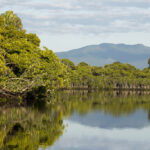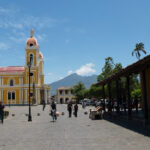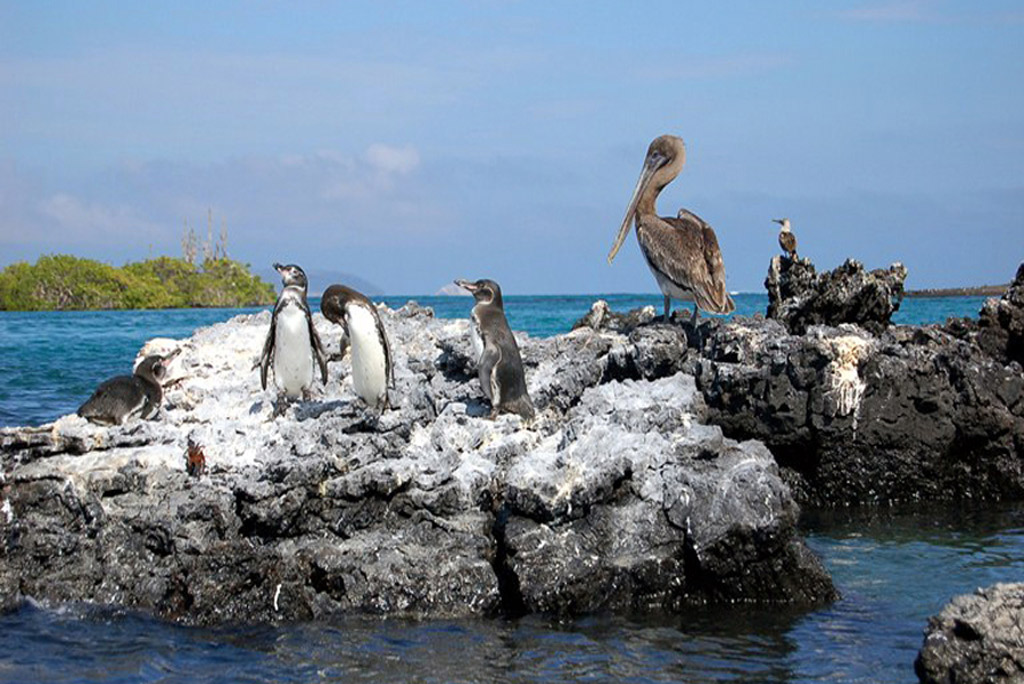AM: ESPINOZA POINT
Located at the base of an imposing volcano (the most active in the Galapagos islands) this site is one of the jewels of the Galapagos National Park. As soon as you disembark you will be surrounded by hundreds of marine iguanas, as this is the largest colony for the species. Sea lions bask in the beaches while their pups play in tide pools. Along the shore you will see flightless cormorants, which are restricted to the western areas of the archipelago. Surrounded by cold plankton-rich waters, Punta Espinosa is home for an array of species, including herons, pelicans, oystercatchers, sea turtles, shorebird and many more. Look up in the mangroves as Galapagos hawks often perch to look for their prey
Snorkel: The nutrient-rich waters around Punta Espinosa attracts great numbers and diversity of fish and sea turtles. Seaweeds are also abundant, making this place the best for seeing marine iguanas feeding underwater. Following a cormorant underwater as it chases fish through the reef is one on the most amazing snorkel experiences you may have on your trip.
Highlights: Galapagos hawks, marine iguanas, flightless cormorants, penguins, sea turtles, sea lions, herons, oystercatchers, shorebirds, sally light-foot crabs.
Trail: 1,6 km / 1 mi
PM: VICENTE ROCA POINT
Surrounded by some of the tallest cliffs in the Galapagos, Vicente Roca point is a great location to observe spectacular landscapes and interesting volcanic features. There is no trail here but you will take a dinghy tour along the shore to get a closer view of pelicans, flightless cormorants, sea turtles, boobies, Galapagos fur seal and marine iguanas. The area is also known to be a good location for whales and dolphins.
Snorkel: Snorkel in the cove to look for sea turtles, penguins, sea lions, cormorants, rays and many different species of fish. Look for fan corals, sponges and other invertebrates growing on the walls.
Highlights: Marine iguanas, flightless cormorants, penguins, sea turtles, fur seals, Nazca & blue-footed boobies
Meals: Breakfast, Lunch, Dinner
Lodging: Catamaran EcoGalaxy






















